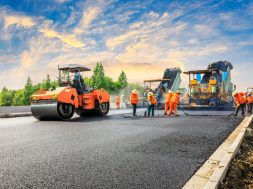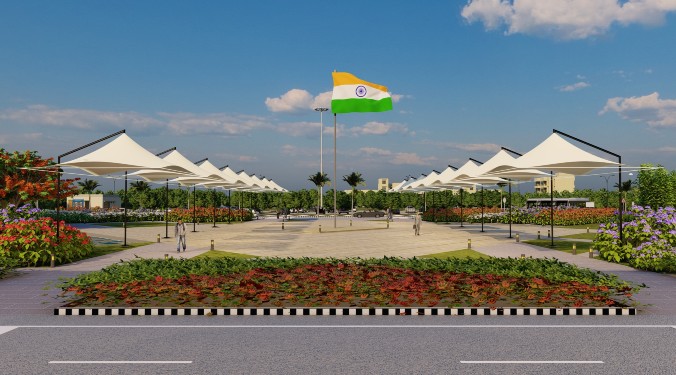“IGBC, with the support of all the stakeholders, adopts a multi-pronged approach in facilitating achieving the common goal of sustainability and awareness for green structures,” says M. Anand, Principal Counsellor, CII-IGBC
The Indian Green Building Council (IGBC), a part of CII, with the support of all the stakeholders, was formed to enable a sustainable built environment for all and facilitate India to be one of the global leaders in the sustainable built environment by 2025. Its Green Building Rating System brings together a host of sustainable practices and solutions to reduce the environmental impacts. In an exclusive interview with ACE Update, M. Anand shares everything about energy efficiency and how IGBC is shaping Indian construction and developing world-class green building standards and practices.
IGBC rating systems brings several sustainable practices and solutions to reduce the environmental impacts. How its rating programmes have become national by choice and global in performance?The concept of green building rating would encourage designers to address national issues by design. In this context, the development and launch of a Green Building Rating Systems would have far reaching impacts on saving natural resources, betterment of working conditions and enhanced productivity, thereby leading to substantial national benefits.
Further, Green Building Rating System brings together a host of sustainable practices and solutions to reduce the environmental impacts. Green building design provides an integrated approach considering life-cycle impacts of the resources used.
IGBC Green Building Rating Systems for India, which were launched in 2007, received overwhelming response from the construction industry. These have become National by choice and Global in performance and are widely accepted by all the stakeholders.
All the rating systems of IGBC are voluntary, consensus based, and market-driven building programmes and based on the five elements of the nature (panchabhutas) — a perfect blend of ancient architectural practices and modern technological innovations.
IGBC Rating Systems has been developed based on the contemporary materials and technologies and evaluates certain credit points, using a prescriptive approach and other credits on a performance-based approach. The rating system is evolved as to be comprehensive as well as user-friendly.Today, IGBC is on its own and has fully indigenised all its green building rating systems. The council is well poised to shape Indian construction the green way and develop world-class green building standards and practices.
What are the criteria on which one should judge whether a building is green or not?The concept of ‘green building’ is primarily based on principle of sustainability. A green building is one which uses less water, optimises energy efficiency, conserves natural resources, generates less waste and provides healthier spaces for occupants, as compared to a conventional building.
It stimulates sustainable practices in design stage, construction stage, followed by operations and maintenance stage. Various imperative aspects associated with green building are sustainable site planning, climate responsive building design, indoor air quality, water efficiency, energy efficiency, eco-friendly commuting practices, managing construction waste, waste segregation at source and effective use of natural resources.
A green building yields significant tangible and intangible benefits which enhances the overall building performance and increases productivity of its occupants.
Most cost-effective steps towards a reduction in a building’s energy consumption usually occur during the design process. What should be the perfect design of an energy-efficient building?The most cost-effective way to reduce the energy consumption is to design a building in a climate responsive way. Basic elements of climate responsive building are orientation of the spaces based on the functionality, size and placement of openings based on the function and climate, appropriate selection of energy-efficient materials and equipment. Incorporating appropriate strategies in the design stage, the energy savings potential would be about 40-50 per cent.
Since the 1980s, passive solar building design and passive house have demonstrated heating energy consumption reductions of 70-90 per cent in many locations. Where does India stand in designing passive solar buildings?In India, the availability of sun is abundant. Thus, the concepts of passive solar building design were practiced since long back, even before the advent of mechanical heating and cooling. It remained as a traditional part of vernacular architecture. In third century BC, during Indus Valley Civilisation, a lot of evidences demonstrate that they have considered factors such as solar orientation, thermal mass and ventilation while designing the residences.
The modern green buildings are continuing to use the solar passive building traditions through the use of solar passive interventions such as light/sun pipes, wind towers, solar air conditioning, radiant cooling, and phase change materials, among others.
Some of the contemporary projects that have extensively used these concepts are Avani Residence in Hyderabad, Suzlon One Earth in Pune, Turbo Energy Ltd. in Chennai, Eicher Corporate Office in Gurgaon, and Gujarat Pollution Control Board in Gandhinagar, to name a few.
What’s your opinion on the “energy harvest” versus “energy conservation” debate?Energy conservation and energy harvest both goes hand-in-hand. Energy conservation is about ‘consuming or utilising energy in an efficient way’ and energy harvest is about ‘generating renewable energy’.
The designers should first focus on utilising the available energy in an efficient way through use of energy-efficient lighting fixtures, HVAC systems, and appliances, then explore the possibility of using renewable energy systems such as solar, wind or hybrid systems to further reduce the energy demand for the green building.
What are the challenges to build of a highly energy-efficient building, and how can we overcome them?Achieving energy efficiency in building poses number of challenges but at the same time presents a host of opportunities.
First is awareness and training. Incorporating energy efficiency measures at design stage requires knowledge of green building concepts. There is now a need for skilled, knowledgeable professionals who have deep understanding of architecture and energy systems. Energy simulation programmes are excellent tools to design energy-efficient buildings. IGBC with the support of all the stakeholders is facilitating training of professionals on these tools.
Second is availability of materials, equipment and technologies. The availability and affordability of materials/equipment which contribute to energy efficiency is another major challenge. Tremendous potential exists for materials and equipment like heat resistive paints, fly ash blocks, insulation materials, high-efficiency chillers, variable frequency drives, high-efficiency cooling towers, building management systems, lighting controls, BIPV (Building-Integrated Photovoltaics), and micro wind turbines, to name a few.In order to facilitate the spread of these products, IGBC has several platforms, including Green Building Congress, IGBC online directory on building materials, Green Technology Centre in CII-Godrej GBC and IGBC local chapter meetings.
Third is national codes and standards. The Government of India has launched the ‘Energy Conservation Building Code (ECBC)’, which is voluntary and applicable to buildings or building complexes that have a minimum connected load of 100 kW or a contract demand of 120 kVA, whichever is greater. This code addresses the minimum performance standards for energy efficiency in a building, covering building envelope, HVAC systems, service hot water and pumping, lighting systems, electrical power and motors. This is an excellent initiative which will enable design of high-performance buildings.
Finally, a building can have the best of materials, equipment and systems in place at the design stage. However, the building can sustain the savings only if it is monitored on a continuous basis. Proper measurement and verification of savings will help the building owner to fine-tune the base line and achieve high level of savings.
Applying rating programmes like IGBC EB O&M (IGBC rating for existing buildings) can help buildings to sustain energy-efficient practices over the life of a building.
How is IGBC playing its role in promoting or developing green buildings in India?IGBC adopts a multi-pronged approach in facilitating achieving the common goal of sustainability and awareness for green structures. IGBC endeavours to take onboard all the stakeholders, including the young minds and professionals. We have taken several measures to promote or develop green buildings in India.
IGBC is developing Green Building Rating Systems to suit various types of buildings. Till date, IGBC has launched rating system for schools, mass rapid transit system, new buildings, existing buildings, homes, commercial buildings, landscape, SEZs, townships and factory buildings. All types of buildings across the country are going the green way.
With over 2 billion sq. feet of green building footprint, India is the second largest country with the green building footprint. The projects spread across the five climatic zones of the country. IGBC aspires to cross 10 billion sq. feet by 2022.
IGBC has 16 local chapters, which reach out green building concepts at the state and regional levels. To meet the local aspirations, we have launched local chapters in different parts of the country.
Then we have more than 40 students chapters, which instil a sense of commitment towards planet earth and encourage the student members to adopt the greener way.
IGBC also forges vibrant partnerships with various national and international organisations in exploring new areas of cooperation and business opportunities. Our recent MoUs include MoU with NHB, CREDAI, Energy Efficiency Services Ltd., European Solar Shading Organisation, University of Salford, IAPMO, ASHRAE India, ISHRAE and IPA.
IGBC also regularly organises “paint our earth- drawing competition for school children” aiming to generate awareness amongst school children, on the need and importance of environmental protection.
With the support and cooperation of all stakeholders, IGBC regularly organises various outreach programmes includes Green Building Congress, green building missions, training/awareness programmes and exhibitions. IGBC has trained over 20,000 professionals on green building rating systems, concepts and technologies.
Cookie Consent
We use cookies to personalize your experience. By continuing to visit this website you agree to our Terms & Conditions, Privacy Policy and Cookie Policy.









